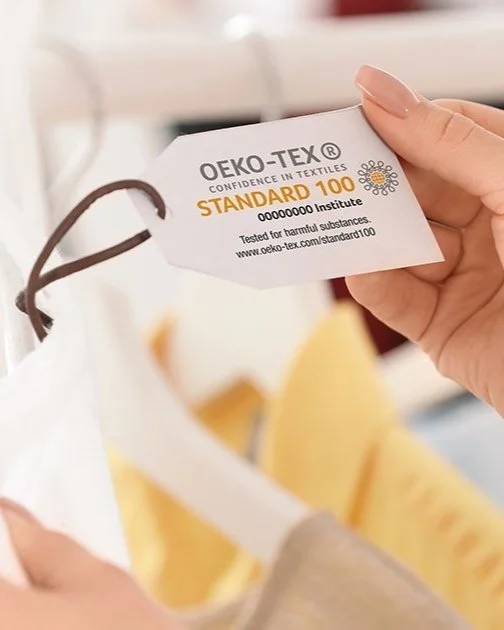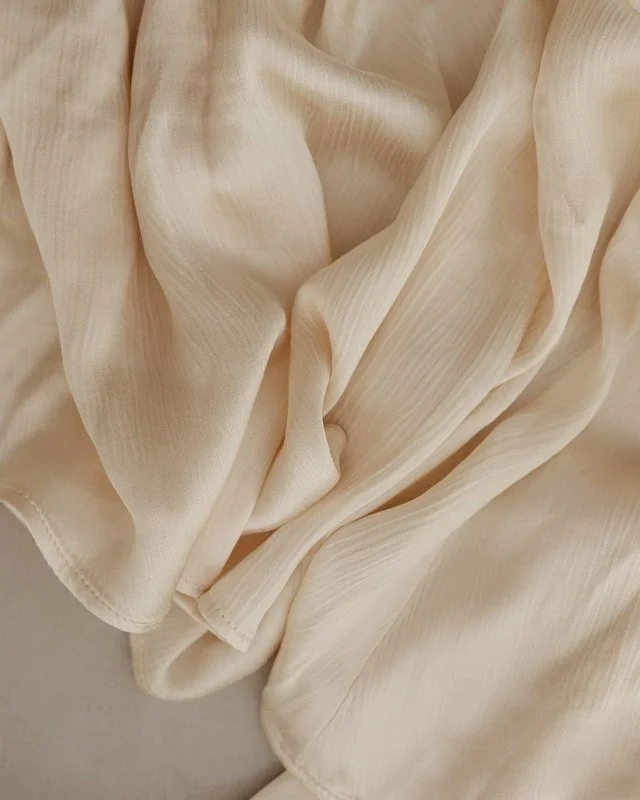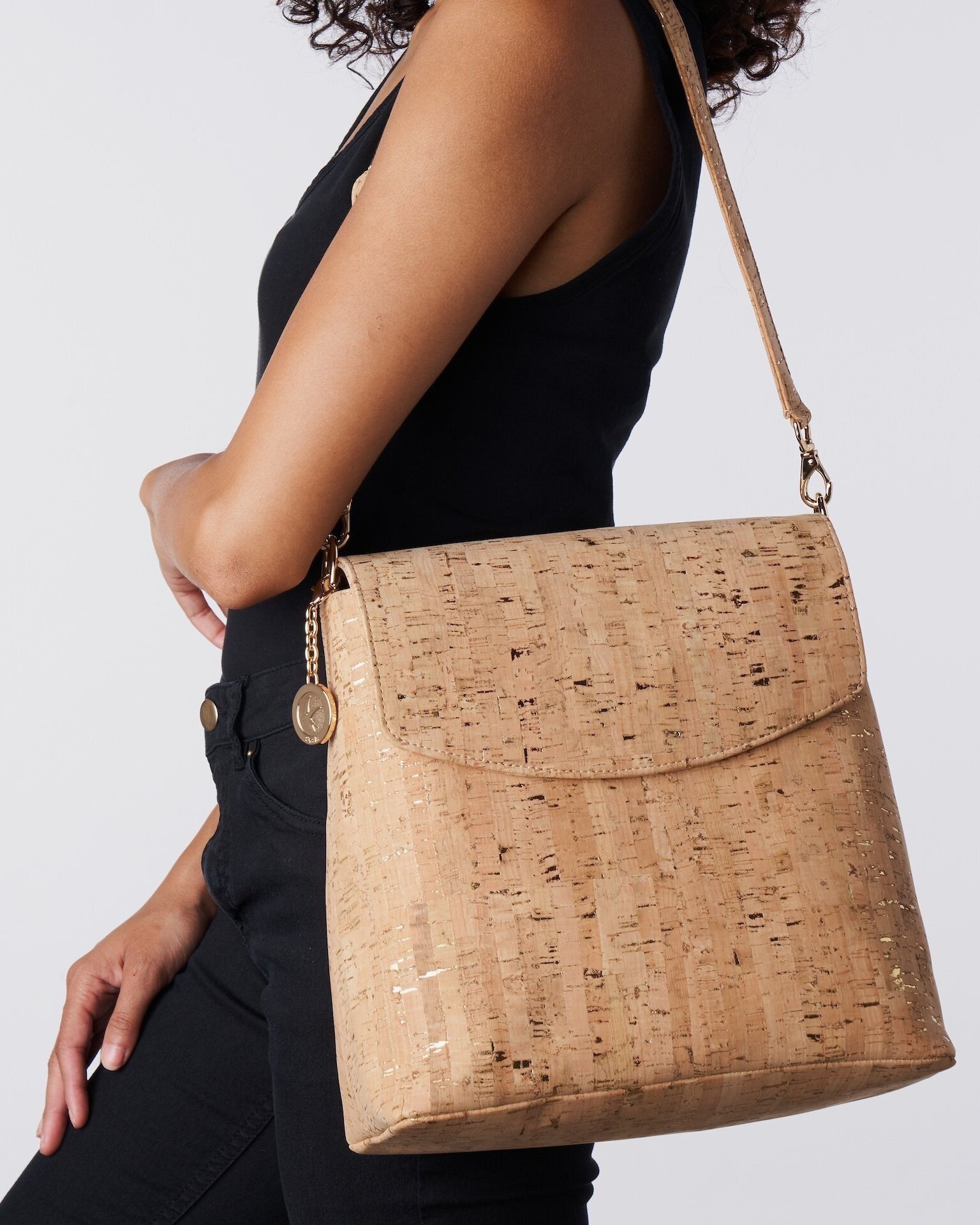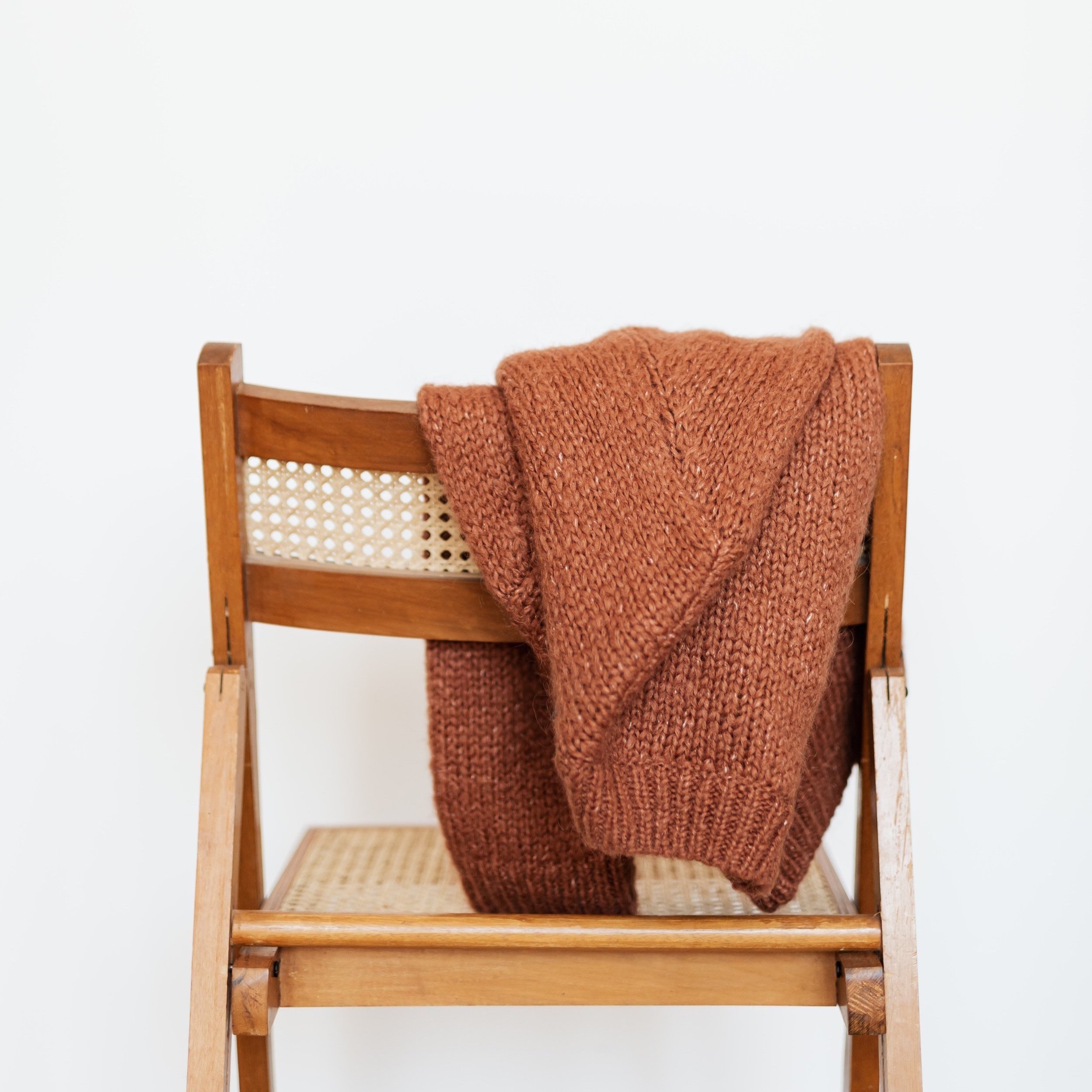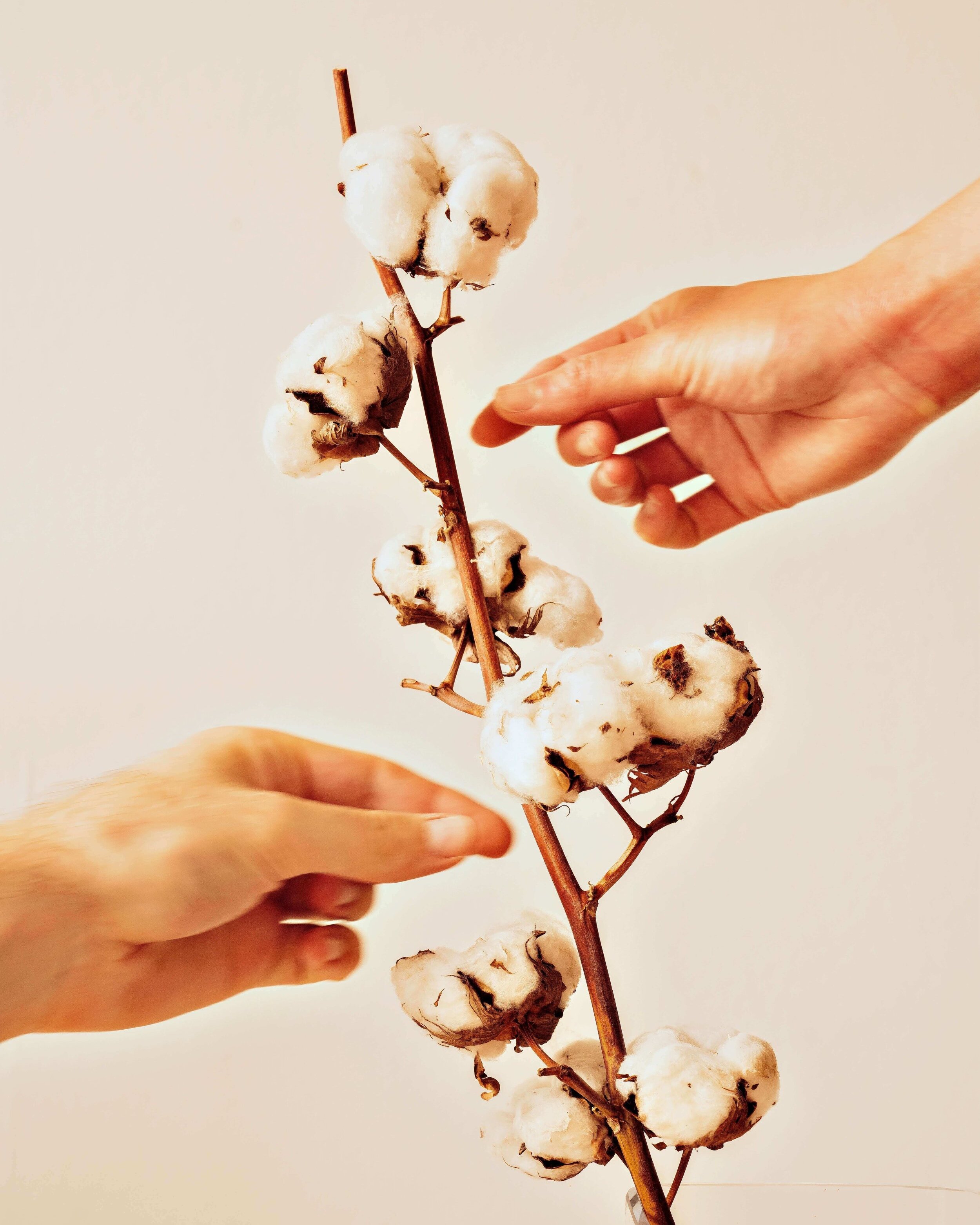What is Spandex? And is it Sustainable?
A Guide to Spandex
It's no secret that compared to the people of our past, we tend to have a much narrower understanding of how clothes, sewing, and fabrics work. After all, one had to get smart when shopping off the rack was not an option, but centuries or decades away from becoming the standard way of acquiring clothing.
While we might not want to or be able to make our clothes at home like many of our ancestors did, knowing more about garments and how they are made can still be beneficial. It can help us appreciate the clothes we own more and understand how the fashion industry works and how it can be improved for the sake of the planet and the people.
Fibers, their use, and manufacturing are substantial facets of the fashion industry and its impact. Without them, clothes as we know them would hardly exist. That's why understanding fibers is essential to understanding fashion, whether you're a maker or an activist.
Spandex, the ever-present petroleum-based supporting actor in the world of fibers, is a staple in countless types of clothing and a fiber worth learning more about if you want to learn more about fashion.
Spandex: the popular fiber with many names
Spandex is a fiber known by different names across the world. Spandex is the most commonly used in the United States, while elastane is the go-to choice to describe the same fiber on the other side of the pond and beyond.
LYCRA®, instead, is the trademarked brand name used to refer to the spandex produced by the homonymous textile company. This fiber is synthetic, and like other human-made fibers, it was created to have certain characteristics and be fit for specific purposes. The year was 1958 when the American chemist Dr. Joseph Shivers invented "Fiber K," spandex's first name while working for the chemical company DuPont.
The research that led to this invention had a specific goal: creating a stretch synthetic fiber that could replace rubber in the apparel industry. As odd as it might sound to us now, this material was the standard choice before spandex's invention to give shapewear elasticity. However, the use of rubber in garments came with plenty of drawbacks.
Rubber deteriorates when it comes into contact with body oils, lotions, or perspiration. In addition to that, it gets significantly stretched out over time. This was a rather undesirable set of characteristics for a material that the apparel industry used for garments worn directly on the skin. The invention of spandex solved the need for rubber, and spandex has been used in the textile industry ever since.
What is spandex made of? A closer look at the composition of this elastic synthetic fiber
The secret behind spandex's elasticity and resilience is in its specific composition. Spandex is a long-chain synthetic polymeric, fully synthetic fiber made with a mix of stiff and flexible segments. This composition allows the polyether-polyurea copolymer to stretch from 5 times to eight times.
Typically, spandex fibers are made chiefly of polyurethane with an addition of other fibers like polyester and nylon. According to The European Union Textile Labeling Regulation, a fiber labeled as elastane must include at least 85% polyurethane.
The polyurethane and the additional materials that compose this elastomer come from non-renewable sources as they derive from fossil fuels like crude oil. This material is mostly manufactured through a process called "solution dry spinning," which starts with a polymer solution made from dissolved raw materials and ends with a solid fiber.
The textile world in numbers - How much spandex gets produced in the world every year?
According to the non-profit company Textile Exchange 2023's version of their "Materials Market Report," 2022, the spandex global fiber market share was around 1%. This number is far from the percentages of more popular fibers like polyester or cotton. Yet, given the gargantuan size of the current global textile production, it is no surprise that while spandex makes up only a tiny part of the total fiber market, we still produce a ton of it every year.
According to the Textile Exchange report, the global spandex production amounted to over 1.2 million tonnes in that same year. This marked an increase from the previous year's output, slightly below 1.2 million tonnes.
It is no coincidence that you have not heard much about recycled spandex. In its recycled form, this fiber is still quite hard to come by. As of then, recycled spandex comprised only 2.8% of this fiber's total global production volumes.
What is spandex used for? The many uses of this fiber
This fiber is used in medical and home textiles but is a staple fiber in the apparel industry. Regarding garments, spandex is hardly ever the star of the show, making up a considerable part of the fabric composition, mostly just in shapewear. Still, if you go through the labels on the clothes in your closet, you'll see that a sizable portion of them contains a small percentage of spandex.
What makes textile companies want to add a bit of spandex to the fabrics used to make anything from underwear and socks to swimsuits, from jeans and leggings to sweatpants? Like the other synthetic fibers, spandex has a set of distinct quality attributes. Adding it to other fibers allows fabrics made with this blend to have higher elasticity. It also has high breathability and high moisture-wicking abilities, which are the right qualities for fiber used in fabrics made for any sportswear.
In addition to increasing garments' stretchiness, spandex increases their comfort, wearability, and overall resilience. It is a valuable ally in making body-con garments like skinny jeans, panties, and bras more wearable and resistant to wear and tear. This is why you can find spandex employed mainly in blended fabrics mixed with natural fibers like cotton or other synthetics where a touch of extra elasticity is needed.
Fibers and the environment - The environmental issues connected to spandex
While adding spandex to a fabric mix comes with a plethora of benefits in terms of performance and comfort, this fiber's manufacturing and its end-of-life come with notable environmental consequences.
The environmental issues connected to this fiber start from the raw materials that compose it. These come from non-renewable resources, and as petrochemicals, they are products of the fossil fuel industry that require a significant amount of energy to be extracted and refined. The fossil fuel industry is the same one responsible for the bulk of the excess greenhouse gas emissions that have led to the current climate crisis, not to mention air pollution, habitat loss, and the health problems experienced by communities living close to industry facilities.
The process that transforms the raw materials into the fiber we know and wear is energy-intensive and chemically intensive, which can cause its own set of potential environmental and human-health-related issues.
The end-of-life of this fiber poses multiple issues to the well-being of the environment and the people. As a petroleum-based fiber, spandex is a non-biodegradable material that stays in this world long after it has been discarded. Throughout its life and once disposed of, the clothing made with this fiber sheds tiny plastic fibers, microplastics, into the environment, contributing to the issue of plastic pollution across the air, land, and oceans. The research behind a 2023 study on microfiber release from elastane blended fabrics revealed that the overall fiber emission of the fabric rose as the elastane percentage increased and that, in proportion, blended fabric elastane fibers released more microfibers.
Spandex is used chiefly in blended fabrics, which, as a whole, are more challenging to recycle, given the difficulty of separating the different components. An issue to which, luckily, a team of scientists from the Vienna University of Technology might have found a scalable, non-hazardous solution, as detailed in their 2023 study.
Image: Sorona
Are there any viable alternatives to virgin spandex?
Given the wide use and sizable environmental impact of spandex, it's safe to say that an environmentally and socially sustainable, biodegradable alternative to the conventional, petroleum-based virgin material would be a game changer in changing the textile industry for the better.
As of now, there are some available alternatives to virgin spandex. Global Recycled Standard (GRS) certified recycled spandex is available, which, compared to the virgin one, has the benefit of diverting textile waste from landfills. There are also a couple of partially bio-based alternatives to conventional, virgin spandex.
From late 2024, the LYCRA Company will offer one in collaboration with Qore®, a bio-derived LYCRA® fiber made with QIRA®, an Iowan corn-based material. To make this bio-derived LYCRA® fiber, the QIRA® is transformed into Polytetramethylene Ether Glycol (PTMEG) and then used to make up 70% of the total bio-derived LYCRA® fiber content.
Dupont™ Sorona® is another alternative to virgin spandex. Made by the same company that invented spandex all those years ago, this fiber is spandex-free and partially plant-based. The stretchy polymer is made from crops through fermentation and the addition of TPA (terephthalic acid), and it's approved by the USDA BioPreferred Program for certified bio-based products.
About the Author
Roberta Fabbrocino is a journalist specialized in climate change and sustainability-related topics. Her articles have been published in several international eco-publications. Roberta also works as a content writer for sustainable companies.
MAKE SURE TO PIN THE PHOTO BELOW TO SAVE THIS POST FOR LATER!
WANT TO FIND SUSTAINABLE BRANDS? VISIT OUR BRAND DIRECTORY!
Our Brand Directory is home to hundreds of sustainable brands, from makeup to cleaning supplies, from underwear to shoes. We have broken everything down by category for easy shopping, along with discount codes unique to Sustainably Chic viewers.








